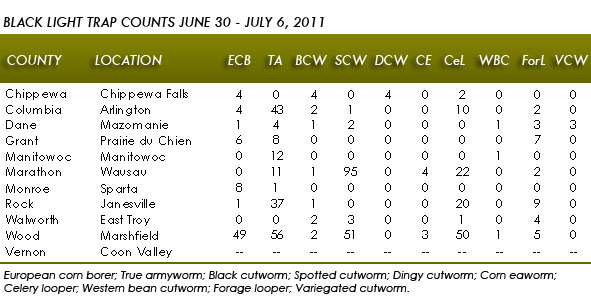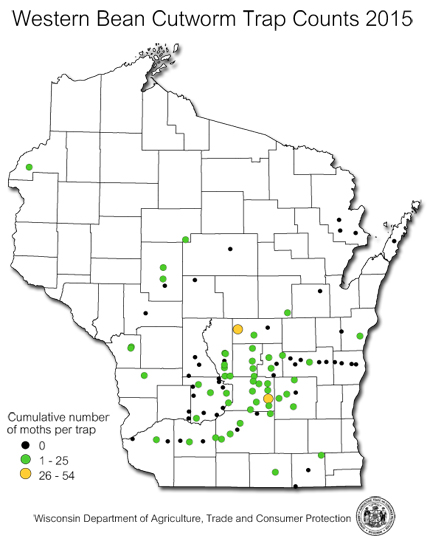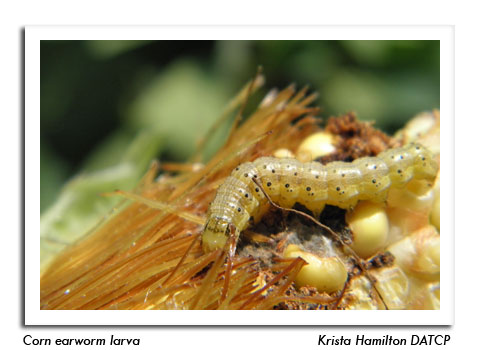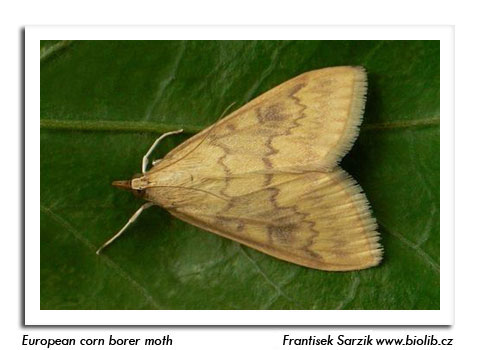
 |
|
|
Corn
Volume 56 Number 16 Date 08/11/2011 WESTERN BEAN CUTWORM - Moth collections have declined to low levels as the annual flight subsides. Preliminary results of the annual trapping survey show an unprecedented decrease in the state moth count, from 10,218 last year to 3,466 as of August 10. Cumulative counts for the 171 pheromone traps distributed throughout Wisconsin are shown in the map below. Sites that registered 101 or more moths are represented by the orange symbols. CORN EARWORM - The significant migration that began three weeks ago has accelerated. Large flights of 80-700 moths were registered in Dane and Waushara counties since late July and treatments are underway. Trap counts for the two-week period of July 28-August 10 were: Chippewa Falls 6, Coon Valley 9, Cottage Grove North 120, Cottage Grove South 80, East Troy 1, Hancock 190, Janesville 4, Keyeser 325, Madison North 28, Manitowoc 0, Marshfield 29, Prairie du Chien 6, Sun Prairie North 700, and Wausau 0. A pheromone trap count of 10 moths for two consecutive nights indicates the need for protective treatment of sweet corn fields with green silks. CORN ROOTWORM - Surveys yielded economic populations of 0.75 or more beetle per plant in 25 of 62 (40%) fields sampled in the southwest, south-central and southeast areas. This is a noteworthy increase from the 13% that had economic counts when the same sites were examined last season. Populations in Crawford, Grant, Iowa, Lafayette, Sauk and Vernon counties varied from 0.1-8.9 per plant and averaged 1.1 per plant. In Dodge, Jefferson and Rock counties, counts were similar and ranged from 0.1-8.5 per plant, with an average of 1.9 per plant. The high count of 8.9 beetles per plant was noted in the Bloomington area of Grant County. Final results of the annual survey should be available later this month. EUROPEAN CORN BORER - The summer flight of moths has peaked in the southern and central areas. Egg deposition is occurring on corn, snap beans, potatoes and other susceptible hosts. The treatment window for second generation corn borers is expected to close next week across the south. Management decisions must be made in the immediate future, before the larvae have bored into corn stalks and ears. --Krista Hamilton, DATCP Entomologist 




|
|
|